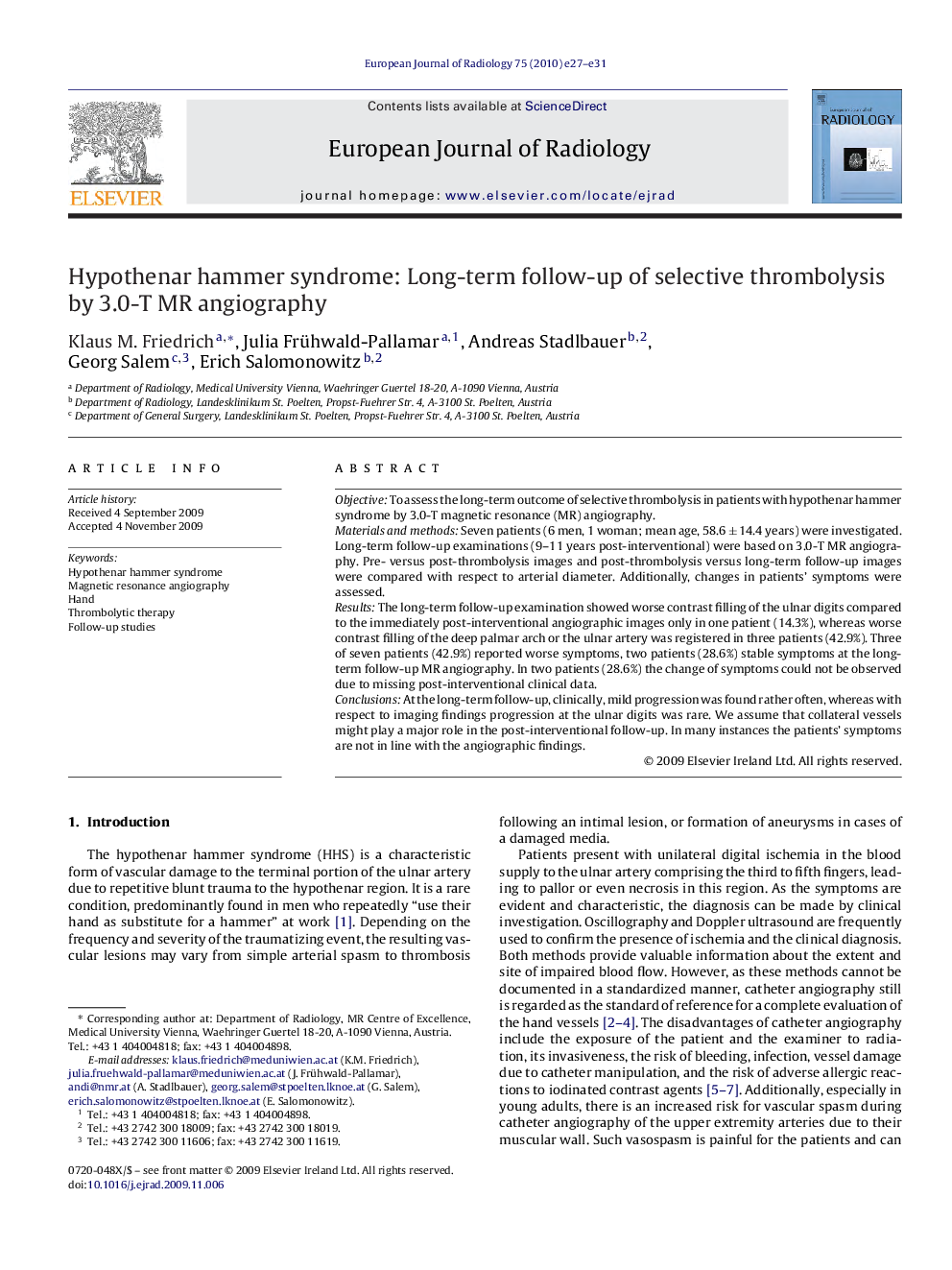| Article ID | Journal | Published Year | Pages | File Type |
|---|---|---|---|---|
| 4226979 | European Journal of Radiology | 2010 | 5 Pages |
ObjectiveTo assess the long-term outcome of selective thrombolysis in patients with hypothenar hammer syndrome by 3.0-T magnetic resonance (MR) angiography.Materials and methodsSeven patients (6 men, 1 woman; mean age, 58.6 ± 14.4 years) were investigated. Long-term follow-up examinations (9–11 years post-interventional) were based on 3.0-T MR angiography. Pre- versus post-thrombolysis images and post-thrombolysis versus long-term follow-up images were compared with respect to arterial diameter. Additionally, changes in patients’ symptoms were assessed.ResultsThe long-term follow-up examination showed worse contrast filling of the ulnar digits compared to the immediately post-interventional angiographic images only in one patient (14.3%), whereas worse contrast filling of the deep palmar arch or the ulnar artery was registered in three patients (42.9%). Three of seven patients (42.9%) reported worse symptoms, two patients (28.6%) stable symptoms at the long-term follow-up MR angiography. In two patients (28.6%) the change of symptoms could not be observed due to missing post-interventional clinical data.ConclusionsAt the long-term follow-up, clinically, mild progression was found rather often, whereas with respect to imaging findings progression at the ulnar digits was rare. We assume that collateral vessels might play a major role in the post-interventional follow-up. In many instances the patients’ symptoms are not in line with the angiographic findings.
